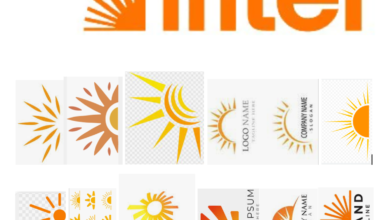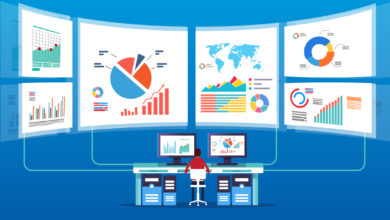[ad_1]
After you’ve chosen a brand name you are happy with, which meets all of the requirements that a brand name should have (see ‘What’s in a brand name?’) it’s time to create a logo. A logo is a group of letters and or symbols used in a consistent and unique way to identify a company, product or service. Slightly ahead of the brand name, the logo is the most prominent and stable element of marketing, and should be designed carefully to fully reflect the branding of your product or service.
For this post, lets assume you are a small business, with no design capabilities and are contracting out the logo design to a designer or crowdsourcing your logo. Even though the designer may being doing all of the work, understanding the 5 key aspects of logo design will help you choose the logo that will help you develop a durable brand identity for your company, product or service.
1. Use
When designing a logo it is important to consider how you plan to use it. A logo created for a website or full color stationery printing will be designed completely different than one designed for imprinting on coffee mugs or t-shirts. Most companies desire to use their logo for more than one application. But aware that the more applications you may use the logo for, the more versions you will need which tend to drive up design costs. In summary, while choosing a logo design consider how you want to use it now and in the future.
2. Image Style
A logo represents your company. How it looks tells potential customers what kind of business you have. Make sure your logo adequately represents you and your business. For example if your business deals in financing, you’d probably want your logo to be conservative, contemporary, or even high tech. Creating a whimsical design could elicit a “fleeting feeling” and take away credibility before you’ve even had a chance to prove it. The opposite could be true if you are a cupcake shop. A whimsical, light-hearted design to show off your creativity is more likely the way to go versus a corporate, conservative logo, as the emotional state someone is in when buying a cupcake is quite different than when investing your money! When choosing an image style you should consider your company’s philosophies and your customer/client profile.
3. Format
Referring back to #1 (Use), make sure you are aware of all of the applications you are going to use your logo in, so the designer can create the appropriate file formats. The formats you should consider are the following:
Vector (AI) Adobe Illustrator: This format is editable in both PC and MAC software. PDF (Portable Document File): Format used by Adobe Acrobat, electronic publishing software for MAC OS, Windows, and UNIX. Vector (EPS): This format can be used by most printing facilities. It contains font and color information.
- Vector (EPS): This format can be used by most printing facilities. It contains font and color information.
- GIF (Graphics Interchange Format): This is a low resolution file used primarily for web pages and e-mail templates.
- JPG or JPEG (Joint Photographic Experts Group): This format allows for storing full color images with very high compression ratios. This format is used primarily for photographs in web pages.
- BMP (300 dpi): This format can be imported into most PC application software.
- Tif or Tiff (Tagged Image File Format): This format can be imported into most PC and MAC software applications. The file size is large and can be used for the full color printing process.
4. Originality
Your logo is a very important tool for branding your company. It should have a uniqueness all its own. When choosing a logo design, do your homework and see what else is out there so you pick one that will stand out from a crowd within your industry. It should immediately catch the eye and have more to offer when looked upon longer.
5. Appeal
Before deciding on your logo, make sure you are completely satisfied your selection. Just like your brand name, it will be with you for as long as you’re in business. As years go by you may opt to update your logo but it should always have the same basic feel to it. After all this is how people identify you. Try to pick colors you know you’ll love today and 20 years from now. Sure these nuances can be changed but often times they are a very important part of the design so try to get it perfect the first time.
Now, go out there and create a logo that represents your brand for now and for years to come!
Source link






